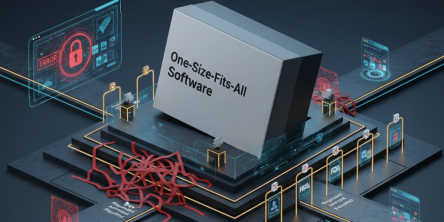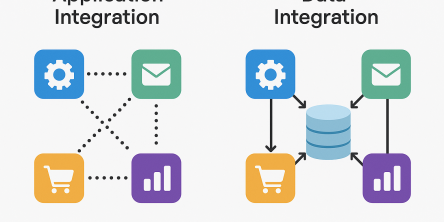Top 5 ML Libraries and Tools That Every Java Developer Should Use

You may know that the face detection software, self-driving cars, and voice controlled devices all are built using Machine Learning (ML) frameworks. In upcoming years, a whole set of next-gen products through ML will transform the way we create, use products and the approaches that are being used to develop software and applications.
Java is the most famous programming language to build applications for mobile, web, desktop, and enterprise-grade solutions. It continually gets upgraded CLI, APIs, and module systems which make it one of the widely used platforms for machine learning.
However, how Machine Learning works using Java? Why should a Java developer get ahead with these ML tools and libraries? What are the current best tools to start with? Let’s find out.
Machine Learning with Java & why a Java developer should use the ML libraries and tools
Today, with Machine Learning, tech giants create core algorithms to power recommendations like Walmart products, detecting frauds at financial corporations, managing social media contents and even Google search results or maps. Evolved from the AI (Artificial Intelligence), Machine Learning performs the application quality improvements and extends their abilities without human involvement.
However, to execute such quality operations, ML requires a massive number of data (feature vectors) to identify the pattern and provide the output. Java language performs the best at delivering these sets of data. Java is the norm for handling Machine Learning algorithms as it is one of the most popular programming languages after Python. It helps to detect frauds, protect from cyber-attacks, and improve network security. Easy maintenance, marketability, readability, and community support are some of the main reasons for using ML tools with Java.
Have a look at the trending Libraries and Tools for Implementing Machine Learning in Java:
-
DeepLearning4j: DL4j or DeepLearning4j is one of the most favorite open-source libraries among the data scientists and Java Machine Learning developers. Its computing framework has full support for deep learning algorithms. DL4j is compatible with Scala, Kotlin, Clojure, and all the other JVM languages. It brings together deep neural networks & reinforcement learning to create and support various neural network structures. When it comes to recognizing the pattern, sentiment in the text, sound, or speech, then DL4j is extremely useful. It is meant for the business environment rather than research tools.
-
Java-ML (Java Machine Learning Library): Java-ML is an open source Java API/framework that provides dozens of ML algorithms. Instead of the graphical user interface, it has a clear interface aimed at the Java programmers, software professionals, and scientists. You need to have sound knowledge in Java programming to leverage its functionalities. The wide range of Java-ML algorithms includes feature selection, data preprocessing, ranking, classification, clustering, and more. A clear interface for the same kind of algorithms allows quick implementations. Java-ML supports every file type. It has a plethora of source code samples and tutorials available.
-
Weka: Weka (Waikato Environment for Knowledge Analysis) is the most popular Java ML platform which is free and naturally portable. You can directly apply Weka ML algorithms to datasets or can call from the Java code. Weka has a user-friendly GUI that helps for a smooth integration through Java APIs. Its more than 267 algorithms perform general purpose and complex ML tasks like data analysis, visualization, attribute selection, anomaly detection, mining of association rules, and more. The Weka 3 workbench is widely used by the data scientists and is perfect for developing new Machine Learning schemes.
-
Apache Spark: Spark is a platform that helps to implement and use ML algorithms through Apache ML library. It efficiently carries machine learning to calculate clusters and combines with TensorFlow for deep learning. Spark MLib is written in Scala, and it uses Breeze- a linear algebra package. You can use MLib in Java, Scala, R, and Python and can plug it into Hadoop workflows easily. The standard algorithms supported by Spark include optimization, feature extraction, dimensionality reduction, and collaborative filtering (not deep neural network). Apache Spark is 100x faster than MapReduce due to its high iterative computation.
-
MALLET: MALLET (Machine Learning for Language Toolkit) is also an open-source library. It drives growth for ML applications through its vast NLP algorithms and utilities. MALLET provides assistance in document classification, extraction of information, topic modeling, sequence tagging, and numerical optimization. The Java command line interface and APIs help to run the programs successfully. GRMM which is an add-on package of MALLET supports the graphical model inference and CRFs training along with an arbitrary graphical structure. Though, the exciting aspect of this is you can use it for both the open-source and commercial app development.
There are other famous Java Machine Learning libraries & tools like Shogun, MOA, RapidMiner, JSAT, and ELKI offer Java developers with a wide range of possibilities. Some of them are ML development platforms while others are containing a vast collection of ML algorithms. Any company providing Java web development today looks for the developers who also have acquired knowledge of Java ML libraries and tools. When you are going to design, build, and deploy any Machine Learning application, these tools and libraries will be supportive.
Similar Articles
At first glance, off-the-shelf software appears to be a dream come true. They are quick to set up, cheaper upfront, and marketed as “universal.”
A modern business must continually adapt. This bit everyone seems to know.
The modern healthcare industry is undergoing a significant transformation. The models of healthcare that we are used to thus far are now making way for a more data driven approach
In the modern world, maintaining good health often feels like a constant challenge. Between busy lifestyles, sedentary habits, and lack of motivation, many people find it difficult to stay consistent with exercise, diet, or wellness practices.
Every news publisher's dream, or just getting started, hits that wall sooner or later. What do you build your site on? You’ve basically got two roads: WordPress or custom development.
Discover key features construction teams need in permit tracking software to boost efficiency, stay compliant, and streamline project management.
Thanks to cloud computing, specialized SaaS apps have become rather accessible.
Let’s be honest – managing royalties isn’t exactly the fun part of working in media or publishing, but it is very important because it protects the creator’s rights and work ownership.
The Software as a Service (SaaS) industry continues to transform before 2025 which creates new obstacles for business operations.








